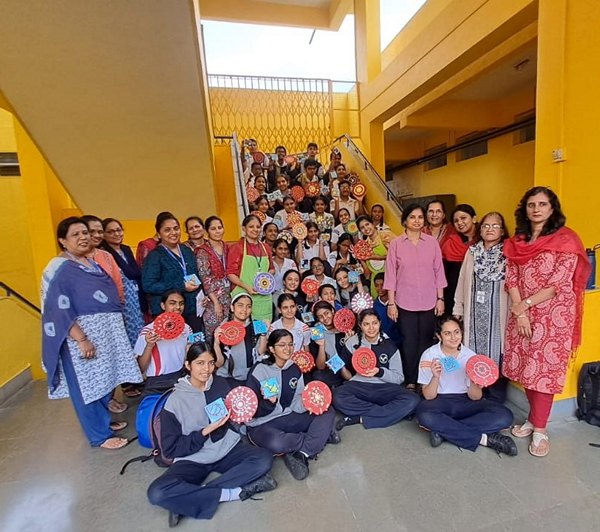
The Heritage Club
ACTIVITY PLAN: Lippan Art and Madhubani Painting
LEARNING BY DOING “For the things we have to learn before we can do them, we learn by doing them.”-Aristotle
Experiential learning or ‘Learning by doing’ is a teaching and learning method involving students who actively engage with the world around them to gain knowledge, skills, and perspectives. It is a "learning by doing" process and reflects the experience.
The Experiential Learning activity for the Heritage Club entailed two activities: Lippan Art and Madhubani Painting on 31 st August 2024 at Vikhe Patil Memorial School, Pune. It is truly said that art is pure, divine, and blissful, so bearing this in mind the club focused on the
first activity for the day – Lippan Art, also known as Chittar Kaam or Lippan Kaam. It is a traditional mural craft originating from the vibrant region of Kutch in Gujarat, India. The immersive experience aimed to provide a holistic understanding of this traditional craft.
Our students began the activity under the guidance of Ms. Kalyani Shah and Ms Supriya Medhekar. The kit for Lippan art was given to each student. The air clay, pieces of mirrors, and a piece of MDF board were included in the art kit. Instructions were given to the students on how to blend the clay and stick that on the MDF Board according to the design drawn on it. The students were told to make an impression on the clay using the scale, pen, or compass. The students were then guided to stick the pieces of mirror on the created design. A hands-on
session was the cornerstone of this learning experience.
This was followed by Madhubani art (also known as Mithila art) which is a style of painting practiced in the Mithila region of India and Nepal. In the yesteryears, the womenfolk of the village drew the paintings on the walls of their home, illustrating their thoughts, hopes and dreams. With time, the paintings started becoming a part of festivities and special events, like during marriage celebrations, on fabric, handmade paper and canvas. The children were given a white square canvas. They were asked to draw a fish because the
fish is a symbol of fertility and prosperity in Madhubani paintings. They symbolize wealth and abundance. The existence of fish means that all the elements of nature are in harmony, and hence, there is prosperity. The students worked in small groups and painted the fish as
per the instructions given by the resource person Ms. Kalyani.
The collaborative nature of the experience fostered teamwork and honed fine motor skills. Art education provides students with a creative outlet that can improve their problem solving skills. They learn how to think outside the box and explore topics in an unconventional way.
The students participated enthusiastically and enjoyed the activity thoroughly as they got totally engrossed in their creative pursuit.
Report Compiled by: Ms. Maria Waghmare
Report Edited by Ms. Shaheen Chaiwala




